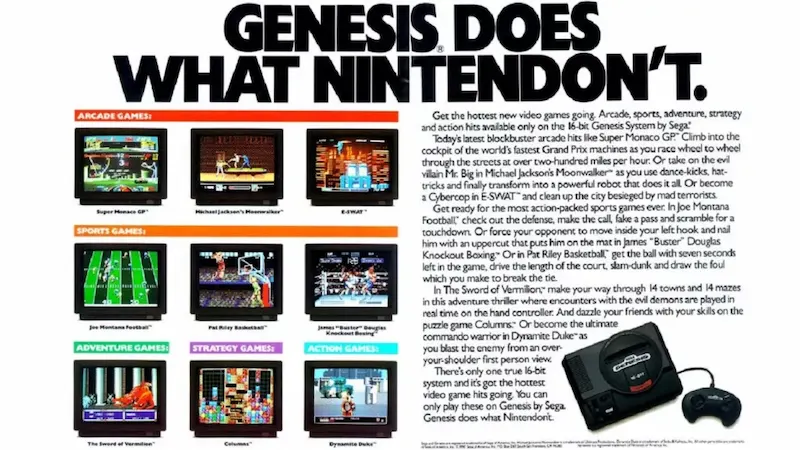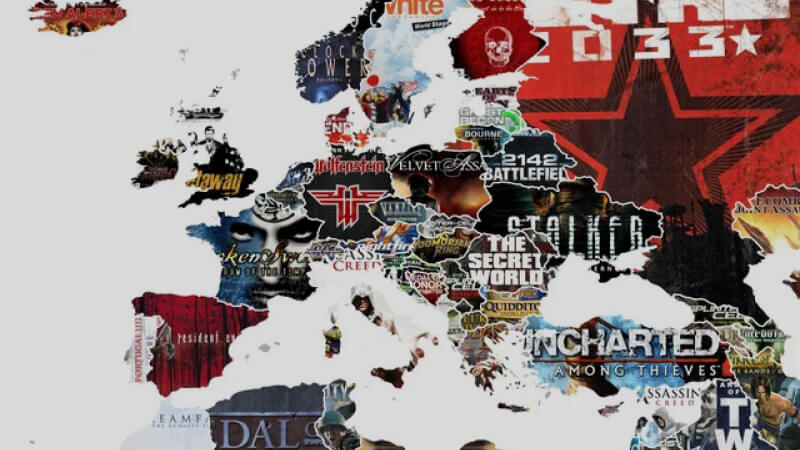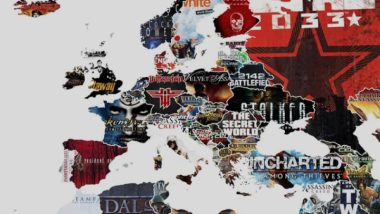Video game monetization in Eastern European countries took a different turn compared to Western Europe, the US and Japan. This article will look back at the period from the early 90s to nowadays and discuss how the Eastern European videogame industry went from bootlegged consoles and pirated cartridges to digital videogame sales.
No Games for the East
The early 1990s were the golden age of console and PC gaming. The battle between Nintendo and Sega was ramping up, and continuous markets were conquered by their relentless marketing campaigns.

However, these battles were fought in the US, Western Europe, and Japan. At the time, all that former Soviet block countries had were quite outdated but still extremely rare locally produced clones of the likes of ZX Spectrum. All of that was about to change.
The Lift of the Iron Curtain and the Influx of Chinese Clones
The downfall of the USSR opened up Eastern European markets to Western and Japanese companies. Local audiences were hungry for games, and gaming quickly became a mass phenomenon, not the privilege of a few lucky geeks owning PCs or ZX Spectrum clones.
While the US and Western markets had a simple monetization model where licensed partner stores sold original consoles and games, the East was flooded by Nintendo clones manufactured in China. The game cartridges were mostly pirated, with some of them absolutely hilarious, like those marketed as 999 in 1 but having 999 recoloured versions of the same game.

These cartridges were sold at markets where you could find clothes and fresh fish nearby. The prices were steep and finding an original NES or Sega cartridge in a box was a challenge. Even if you managed to find an original one, you'd have to think twice — you could get a couple of pirated games for the same price instead. All these factors led to a paradoxical situation: post-soviet countries had a booming videogame market, but game devs weren't making a cent from it.
The steep price of the consoles created a boom of what later became known as internet cafes. Places with TVs, original consoles and game cartridges offered at an hourly rate. Similar to the arcades in the US or Japan, but without sharing any revenue with the game developers and a different monetization model. So, you had hundreds of kids visiting these places daily and spending their lunch money to fight a few rounds in Mortal Kombat while the crowd behind them cheered for one or another. Those cafes also offered an option to rent a console and some cartridges for a few days, which was considered a form luxurious for entertainment.
The Big Boys Catch Up: Videogame Publishers Enter the Market
By the late 90s, the economies of former Eastern European states grew, and people were beginning to buy more consoles. This finally caught the eye of developers and publishers, who recognised that this market has a huge financial potential. Official retailers and partner stores started to appear, and the market began catching up to the rest of the world.

Thus, the battle between official retailers and stores that sold pirated games entered a new phase. Sony took the market by storm with the PlayStation 1. The PC was blessed with great titles but faced the same piracy problem. Some publishers and developers refused to sell their games in specific countries or entire regions since they knew that games would be heavily pirated.
The ones who decided to enter partnered with anti-piracy software developers, who created systems that required PC players to have the CD with the game always in the CD-ROM. This partially alleviated the piracy problem on some titles. But the number of "units sold" was still too little for the market with tens of millions of potential customers.
It was apparent this fight needed a completely different approach. Players needed to be educated about game development. The gap between the player and the developers had to be breached, and this is where gaming media came to help. First gaming websites and gaming magazines in the early 2000s did a great job of achieving this goal.
The Gaming World Goes Online
Outstanding online projects like StarCraft, Diablo 2, and RuneScape helped drive the developers' income and gave people unforgettable moments and sleepless nights full of adventures. Valve entered with Steam and Half-Life 2, and suddenly people noticed they were no longer buying games in the physical stores.

Console games using DRMs also gained ground against pirates and became profitable in Eastern European countries. However, they were slow to embrace the growing influence of eCommerce in gaming. They did not offer the option to buy games online and download them onto the consoles due to hardware limitations. PS3 and Xbox 360 were caught up a bit later.
The consolidation of the market and the dominance of STEAM
By about 2010, Steam already had thousands of games. The only problem was payment methods and country coverage. Stable internet connection and online payment options were not as common yet, so many physical copies of PC games could be connected to Steam after the purchase. As technological advancements in eCommerce and the internet began evolving extremely fast, the gaming world used all of these innovations for the good of gamers and developers.
This led to Steam's monopoly in the PC gaming world, while consoles battled each other more competitively. Exclusives became the main weapon in this battle, so both Sony and Microsoft established and acquired a number of game development studios creating comfortable and well-paid jobs in the videogame industry. On the other hand, Steam offered its platform services to any developer or publisher, but at an ever-growing commission.
The future of videogame monetization and the democratization of the market
By the time this article is being written, the commission sits at a hefty 30%. This 30% became a staple of the gaming industry, which now resides even on the phones we carry. But Valve understood the importance of disparities between different parts of the world and created the concept of regional prices, which democratised gaming for the developing countries.
However, game devs still had to raise prices in order to cope with high commissions and earn a profit. Today, when the competition between Epic Games, Steam, Apple Microsoft, and Google is ramping up, developers found new ways to monetize their projects using financial and marketing tools. They continue to conquer new markets and bring millions of gamers worldwide joy.
Hopefully, this process will eventually even out the market, democratise it, and make it more attractive to gamers and developers.








